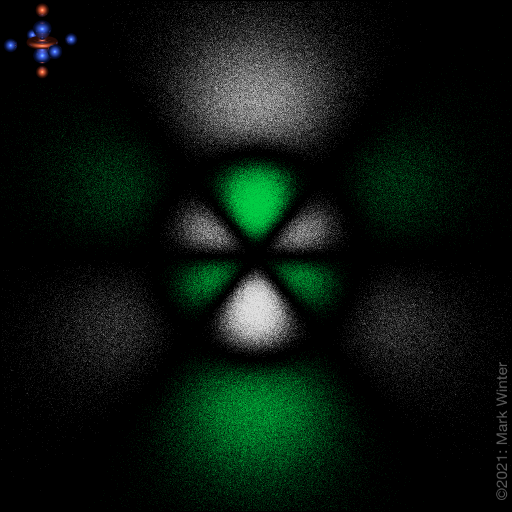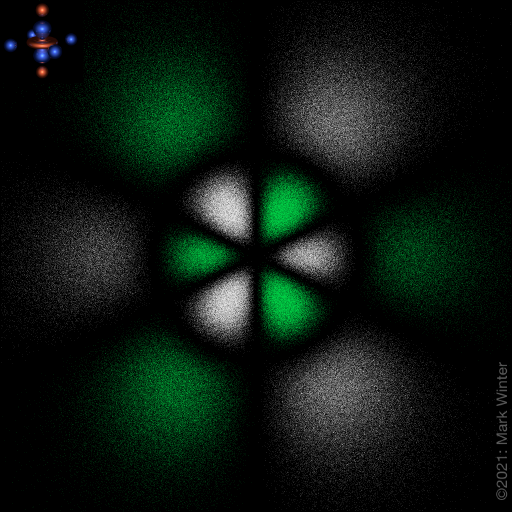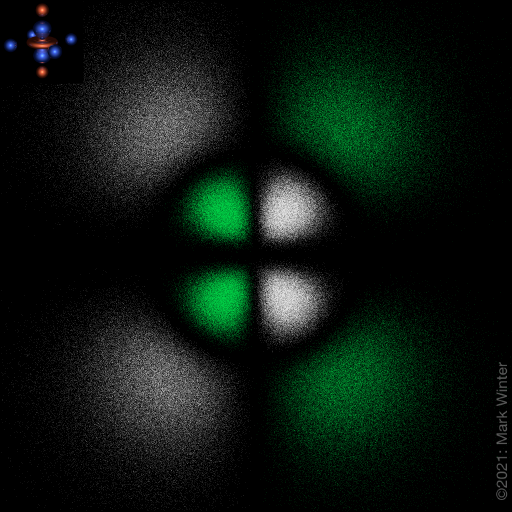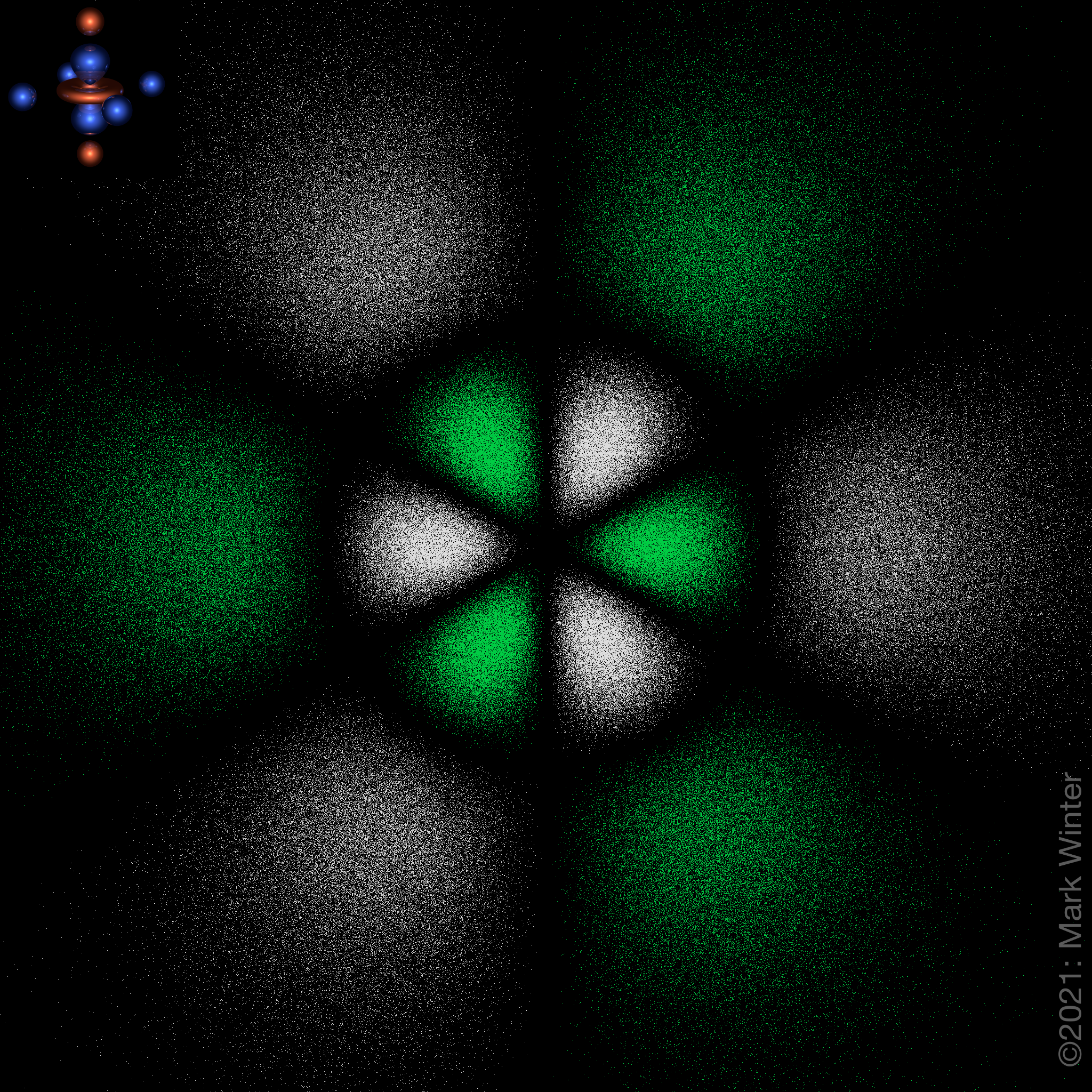Atomic orbitals: 5f electron "dot-density"
This page shows representations of electron density in two ways. The first is two-dimensional electron "dot-density" diagrams - plots across an appropriate plane of each 5f orbital. These were created using a Monte Carlo computational method. The second page allows you interact (zoom, rotate) with three-dimensional electron "dot-density" models representing electron density of the various 5f atomic orbitals created by the same Monte Carlo computational method. Green represents regions for which the wave functions are positive and white represents where values are negative.
5fz3, 5fx3, and 5fy3 electron "dot-density"
The 5fz3, 5fx3, and 5fy3 orbitals are all in the cubic set of 5f. Additionally, the 5fz3 orbital appears in the general set.

5fxz2 and 5fyz2 electron "dot-density"
The 5fxz2, 5fx3, and 5fy3 orbitals are both in the general set of 5f but neither is in the cubic set.

5fxyz and 5fz(x2-y2) electron "dot-density"
The 5fxyz and 5fz(x2-y2) orbitals are both in the general set of 5f and both in the cubic set. The cubic set also contains 5fx(z2-y2) and 5fy(z2-x2) orbitals which are the same in appearance, differing only in direction.

5fy(3x2-y2) and 5fx(x2-3y2) electron "dot-density"
The 5fy(3x2-y2) and 5fx(x2-3y2) orbitals are both in the general set of 5f but neither is in the cubic set.

Using JSmol
You can use your mouse to manipulate the "orbital" in the "JSmol" image above. How you do this depends upon how you are viewing this page.
- On a computer, to rotate about the x and y directions, drag mouse around the image
- On a computer, to rotate about the z direction (which comes out of the screen towards you), hold shift and drag mouse horizontally
- To zoom, hold shift key down and drag mouse vertically
- To reset the image, hold down shift key and double click ony part of the image not containing dots
- On a mobile device experiment using one or two fingers to rotate and zoom
The OrbitronTM, a gallery of orbitals on the WWW: https://winter.group.shef.ac.uk/orbitron/
Copyright 2002-2023 Prof. Mark Winter [The University of Sheffield]. All rights reserved.